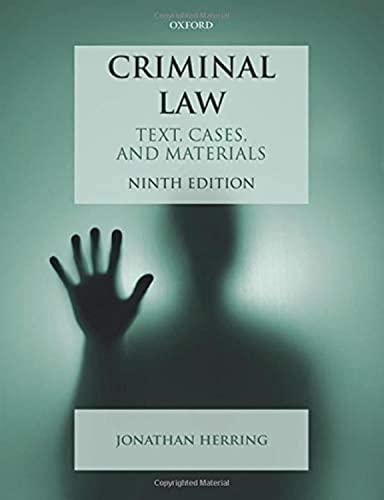Question
An op-ed is a short argument to a public audience. It stands for opposite the editorial page, hence op-ed). Every OpEd can inform the public
An op-ed is a short argument to a public audience. It stands for opposite the editorial page, hence op-ed). Every OpEd can inform the public about an important issue or unique perspective. Op-eds can be influential in that they can sway readers to support a position that you care about. To do so, they need to be carefully crafted to speak understandably to a wide audience. Consider who would read your piece, and what could happen as a result? Think about what change it could affect. This will inform the best tone and style you employ for your piece. An op-ed typically consists of the following components: 1. For your Op-Ed, the topic you select needs to be in conversation with issues one of the theoretical frameworks covered in the course. 2. A lede or opener which draws the reader into your argument. 3. A clear, easy to understand description of the issue or change you are advocating for. 4. 3 distinct points which support your argument. Each argument should be backed up with concrete evidence (a minimum of 5 scholarly sources - see point 6). 5. Acknowledgement of 1 or more obvious counterarguments. Think about what the arguments folks who hold a polar opposite viewpoint may argue against your position. Anticipate what they might say and with effective argumentation refute/disarm their counterargument. 6. A conclusion which includes a clear recommendation for what should be done differently. 7. References: Minimum of 5 scholarly sources (academic journals/book) outside of class readings. All references should be embedded hyperlinks. Include reference list at the end: in this style (as discussed in class) (This form of writing research papers is used mainly in the social sciences, like psychology, anthropology, sociology, as well as education and other fields.) 8. The Op-ed needs to be situated within the context of Canada. You can certainly reference the issue within the context of elsewhere to provide further context or breadth of the issue, but the piece should be framed within Canada. Your op-ed has a strict word limit of 901 words. choose any one topic rom below
2. Rehabilitation vs. Retribution: Debate the merits of rehabilitation-focused versus retribution-focused approaches within the Canadian criminal justice system. 3. Youth Criminal Justice Act (YCJA): Examine the principles and effectiveness of the YCJA in addressing youth crime and rehabilitation. 4. Restorative Justice Programs: Evaluate the benefits of restorative justice programs in Canada and their potential to reduce recidivism. 5. Gender Disparities in Canadian Prisons: Examine the disparities in the criminal justice system's treatment of women and the need for gender-sensitive policies. 6. The Impact of Indigenous Overrepresentation in Canadian Prisons: Discuss the disproportionate number of Indigenous people in Canadian correctional facilities and the underlying systemic issues that led to this overrepresentation.. 7. The Impact of Technology on Crime: Discuss the evolving landscape of crime in the digital era and the role of technology in both crime prevention and criminal activity. 8. Sentencing Disparities: Investigate disparities in sentencing outcomes based on factors such as race, gender, and socioeconomic status. 9. Drug Policy and Harm Reduction in Canada: Analyze the effectiveness of harm reduction strategies in addressing drug-related crimes and their impact on public health. 10. Rethinking Drug Offenses in Canada: Discuss the role of drug offenses in Canada's criminal justice system and the potential for decriminalization or alternative approaches, and legalizing certain drugs in Canada and their potential impact on crime rates. 11. Intimate Partner Violence and the Criminal Justice System: Analyze the challenges and improvements needed in addressing cases of intimate partner violence within the Canadian criminal justice system. 12. Abolitionist Movements and the Future of Prisons: Examine the growing abolitionist movements in Canada and their vision for a criminal justice system without prisons. 13. Anti-Black Racism in Policing: Investigate the prevalence of anti-Black racism within law enforcement agencies and the urgent need for change.14. Indigenous Justice and Reconciliation: Highlight efforts to incorporate Indigenous justice principles and reconciliation in addressing crimes involving Indigenous individuals. 15. Environmental Crimes and Eco-Criminology: Explore the growing field of eco- criminology and its relevance to environmental crimes in Canada. 16. Human Rights and Canadian Immigration Detention: Examine the human rights implications of immigration detention in Canada and advocate for more humane policies. 17. Criminalization of Homelessness: Explore the criminalization of homelessness in urban areas and the need for supportive housing initiatives.
Step by Step Solution
There are 3 Steps involved in it
Step: 1

Get Instant Access to Expert-Tailored Solutions
See step-by-step solutions with expert insights and AI powered tools for academic success
Step: 2

Step: 3

Ace Your Homework with AI
Get the answers you need in no time with our AI-driven, step-by-step assistance
Get Started


